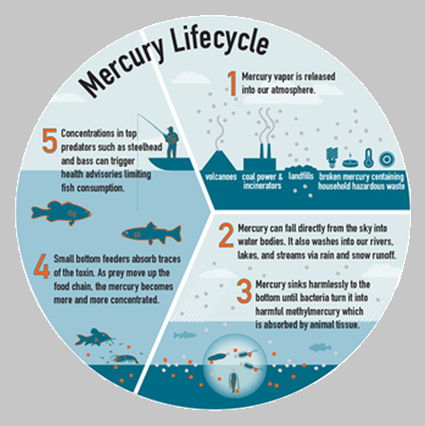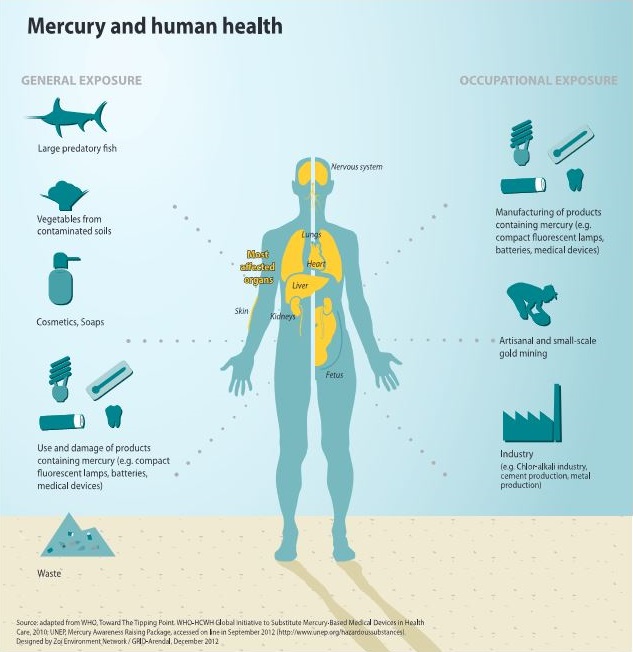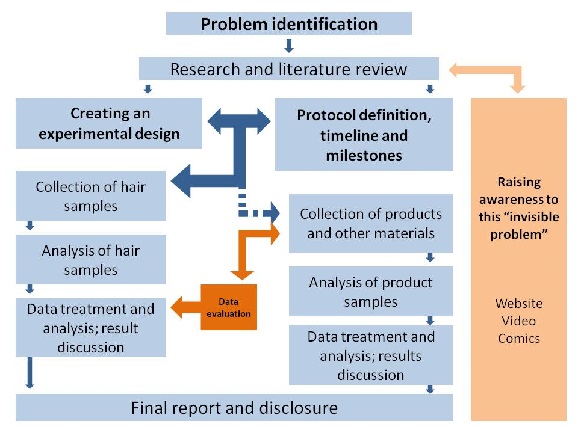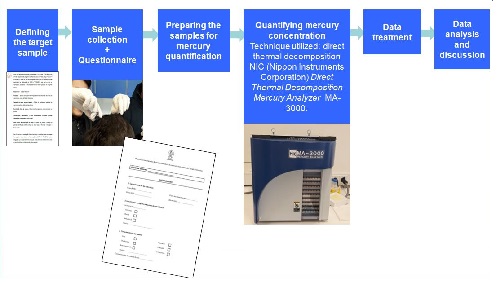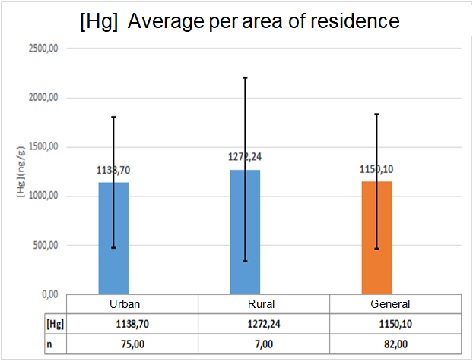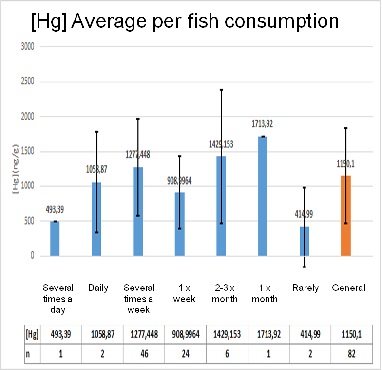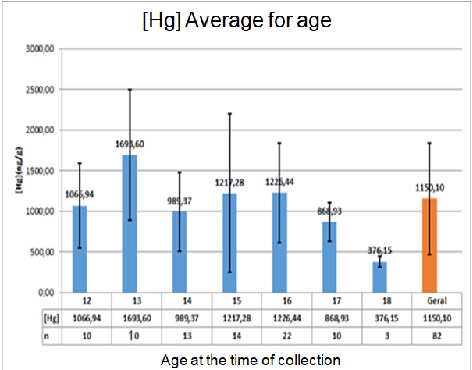Problem identification
The element mercury is a metal, liquid at temperature and environment pressure, silver-colored, with a low solubility in water and lipids. It may appear in diverse forms and in a high number of chemical types, mainly like elementary mercury, organic and inorganic types.
This element is found as expected in environment and it can come from the erosion of rocks and volcanic activity, among other natural processes. However, the majority of mercury in the environment comes from processes related with human activity, among them the use of fossil combustibles – especially coal, power plants, mineral industries (gold and mercury mines), pesticides and medical equipment (UNEP, 2002; WHO, 2007; Sousa et al., 2013).
Apart from the chemical versatility of this compound, mercury, as its types, has the power to affect the humans, directly or indirectly. It can cause different symptoms/diseases in several organs and systems of the body, such as nervous system, kidneys, lungs and heart (respiratory or cardiovascular diseases). For example, methyl mercury is usually associated to neurological problems with the possibility of causing diverse symptoms, such as sensory troubles, the narrowing of the field of vision, speech difficulties, losing one’s balance, amongst other effects (Sousa & Barbosa, 2000).
This is due to the fact that methyl mercury (picture 1) is highly reactive and toxic to the organisms, since it has the capacity of surpassing the blood-brain barrier (BHE). Besides, mercury, especially methyl mercury, is a biomagnified compound along the food chain, mainly in marine environments (Watras & Bloom, 1992). So, consuming several organisms with low mercury concentrations will expose the beings at the top of the food chain to relatively high mercury concentrations.
This includes fish that, as part of our food, are one of the main sources of the human exposure to this type of mercury (Issaro et al., 2009). Methyl mercury, in high concentrations in blood, can cause mercury poisoning, a serious disease which can lead to death (Clarkson & Magos, 2006). This disease affects the human nervous system, causing neurological troubles, such as losing the sensibility in upper and lower ends or the coordination, diminishing of vision or hearing and slurred speech.
In children the neurological system isn’t completely developed and the methyl mercury can cross the blood-brain barrier. It is documented the relationship between the methyl mercury and the decreasing of the cognition power in children in development (Oken et al., 2005). So, it is necessary to monitor the child’s development and to prevent mercury exposure (WHO, 2007).

Chemical composition of methylmercury



